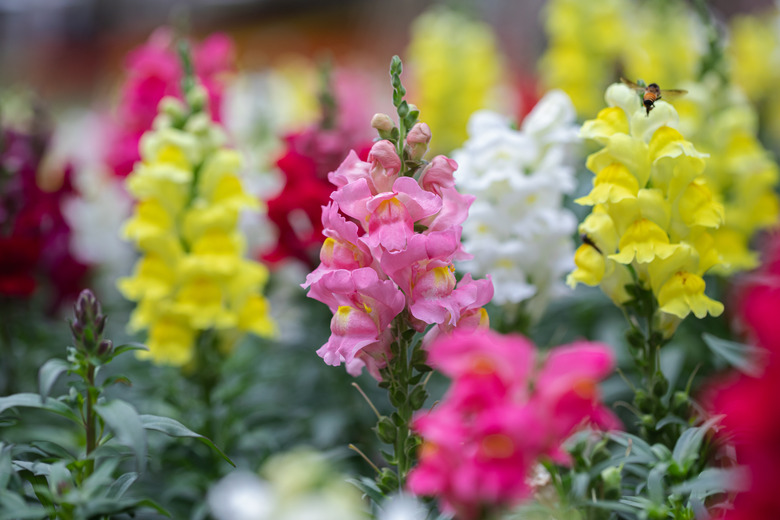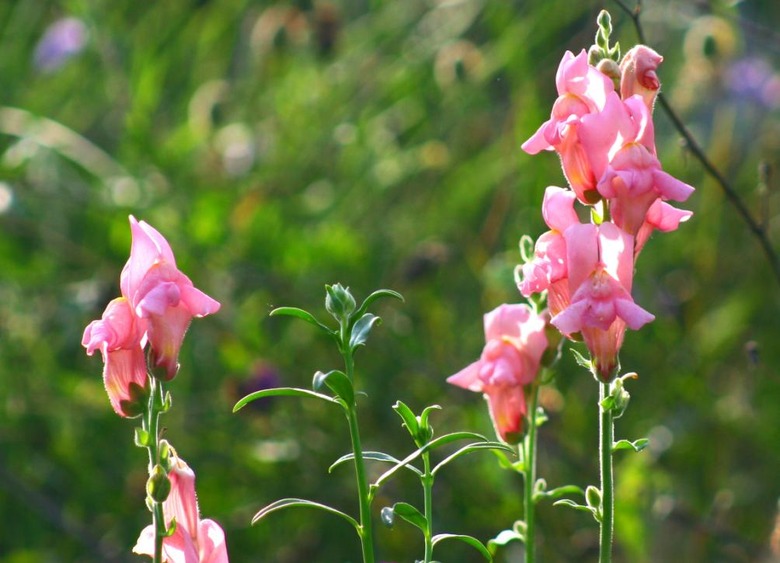How To Care For Perennial Snapdragons
There are around 40 species of snapdragons (Antirrhinum spp.), which are flowering plants grown for their magnificent bloom-covered stalks that come in an array of colors. The flowers are said to resemble the snout of a dragon, hence the species name.
The most commonly cultivated species of snapdragon is the greater snapdragon (Antirrhinum majus), which is hardy in U.S. Department of Agriculture plant hardiness zones 7 to 10, though some hardier hybrids are available.
Are Snapdragons Perennials or Annuals?
Snapdragons are short-lived perennials within their hardiness zones. This means they only live for a few years. North of zone 7, however, species snapdragons are grown as annuals, though they can be overwintered with some protection. Snapdragons are inexpensive to purchase in starter packs in the spring, however, which is why caring for the plants as perennials is not always worthwhile.
The Dulcinea's Heart snapdragon cultivar (Antirrhinum 'Dulcinea's Heart,' zones 5 to 8), which produces yellow and apricot-colored flowers and has a height of up to 15 inches, is a hybrid cultivar that is hardy to USDA zone 5.
Snapdragon plants begin to bloom in April until the first frost of the fall. South of zone 7, snapdragons are often planted in the fall and will bloom continuously while temperatures are above freezing. However, they may not bloom during the hottest parts of the summer.
Growing Perennial Snapdragons
Snapdragons can be easily grown from seed. The seeds take approximately 10 to 14 days to germinate and best do so at temperatures between 60 and 70°F. You can start the seeds indoors and transplant them into the garden before the last frost date, as these plants can handle a light freeze.
Snapdragons need full sun, which means six to eight hours of sunlight a day, in order to perform at their best.
Snapdragons come in a range of heights, including dwarf varieties with a height between 6 and 15 inches and tall varieties that may be 3 or 4 feet tall. Tall snapdragons need to be staked during the first few weeks until the plants become bushy enough to support their own weight.
Tip
Do not water snapdragons overhead, as moisture can lead to a number of fungal diseases, including leaf spots and downy mildew.
Snapdragon Care Recommendations
- **Watering:** Snapdragon plants should receive about an inch of water a week during the growing season. You can let the soil dry out between waterings but do not withhold water to the point that the plant wilts. It is important not to water snapdragons overhead, as moisture can lead to a number of fungal diseases, including leaf spots and downy mildew.
- **Fertilizer:** Snapdragons will perform better when fed with a balanced 20-20-20 fertilizer in the spring, especially if you notice blooming decreasing after the initial flowers appear. You can also cut back the plant to reinvigorate it.
- **Pinching:** To prevent snapdragon plants from becoming leggy, take the time to pinch them, which promotes branching and bushier growth. You can also prolong the bloom time of snapdragons by removing spent flowers right away.
- **Mulching:** To protect perennial snapdragons during the coldest stretches of winter, you can apply a layer of pine straw as mulch and remove it when temperatures rise.
References
- Missouri Botanical Garden: Antirrhinum majus
- Missouri Botanical Garden: Antirrhinum 'Dulcinea's Heart'
- The Ohio State University: Antirrhinum
- Cornell University Growing Guide: Snapdragon
- Colorado State University Extension: Antirrhinum majus
- Nebraska Extension in Lancaster County: Snapdragons
- University of Georgia Extension: Snapdragons Add Fall Color and Can Withstand Winter Temperatures

